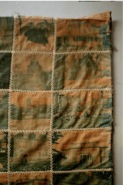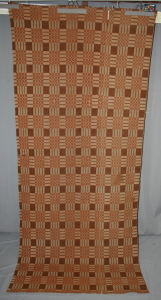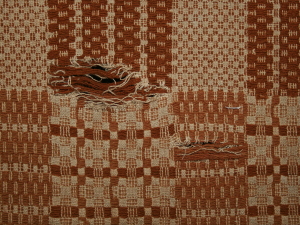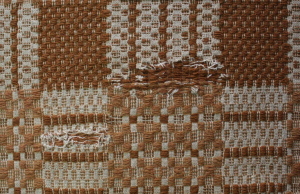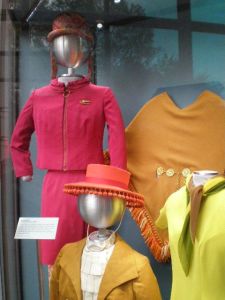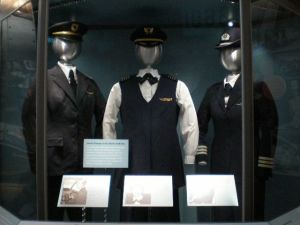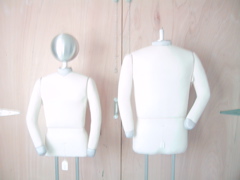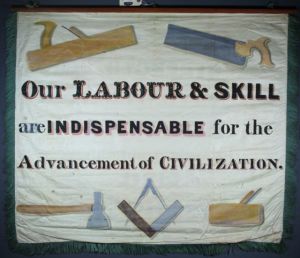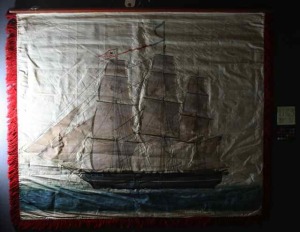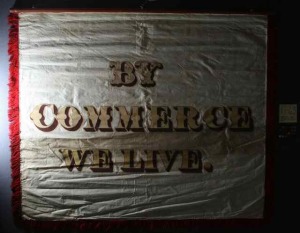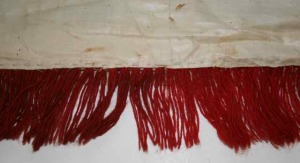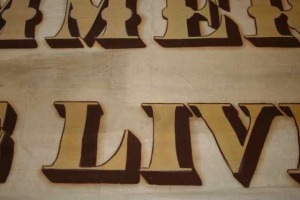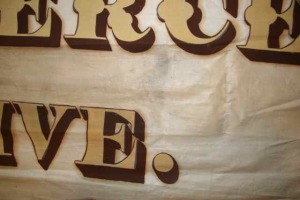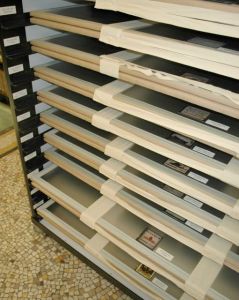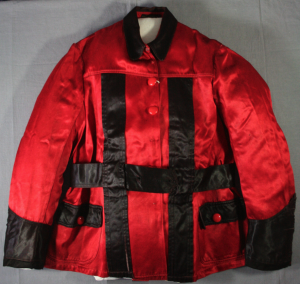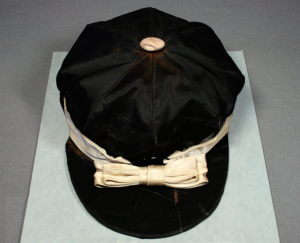This patchwork of sixty-six cyanotypes of people, animals and places in New York’s Capital Region, was lined with a satin weave fabric and attached to a board with several rows of double-sided tape. The focus of the treatment was to better preserve the patchwork.
The patchwork quilt was vacuumed overall and stitching along the perimeters was released to remove the backing fabric. An overall cleaning was performed, and the patchwork was carefully and slowly dampened to align and straighten areas of the textile. A storage mount was constructed from acid-free board with strips of 4-ply board hinged to the four sides with linen tape. The textile was sandwiched between a muslin handling sling and a layer of acid-free tissue. The paper label of the image’s identification was encapsulated in a Mylar L-envelope.

